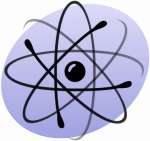Physics
|
13 october 2018 23:00:32 |
| Remote Sensing, Vol. 10, Pages 1621: Imaging Spectroscopic Analysis of Biochemical Traits for Shrub Species in Great Basin, USA (Remote Sensing) |
|
Tweet The biochemical traits of plant canopies are important predictors of photosynthetic capacity and nutrient cycling. However, remote sensing of biochemical traits in shrub species in dryland ecosystems has been limited mainly due to the sparse vegetation cover, manifold shrub structures, and complex light interaction between the land surface and canopy. In order to examine the performance of airborne imaging spectroscopy for retrieving biochemical traits in shrub species, we collected Airborne Visible Infrared Imaging Spectrometer—Next Generation (AVIRIS-NG) images and surveyed four foliar biochemical traits (leaf mass per area, water content, nitrogen content and carbon) of sagebrush (Artemesia tridentata) and bitterbrush (Purshia tridentata) in the Great Basin semi-desert ecoregion, USA, in October 2014 and May 2015. We examined the correlations between biochemical traits and developed partial least square regression (PLSR) models to compare spectral correlations with biochemical traits at canopy and plot levels. PLSR models for sagebrush showed comparable performance between calibration (R2: LMA = 0.66, water = 0.7, nitrogen = 0.42, carbon = 0.6) and validation (R2: LMA = 0.52, water = 0.41, nitrogen = 0.23, carbon = 0.57), while prediction for bitterbrush remained a challenge. Our results demonstrate the potential for airborne imaging spectroscopy to measure shrub biochemical traits over large shrubland regions. We also highlight challenges when estimating biochemical traits with airborne imaging spectroscopy data. |
| 138 viewsCategory: Geology, Physics |
 Remote Sensing, Vol. 10, Pages 1622: Semi-Automated Delineation of Stands in an Even-Age Dominated Forest: A LiDAR-GEOBIA Two-Stage Evaluation Strategy (Remote Sensing) Remote Sensing, Vol. 10, Pages 1622: Semi-Automated Delineation of Stands in an Even-Age Dominated Forest: A LiDAR-GEOBIA Two-Stage Evaluation Strategy (Remote Sensing)Remote Sensing, Vol. 10, Pages 1636: Multi-Resolution Feature Fusion for Image Classification of Building Damages with Convolutional Neural Networks (Remote Sensing) 
|
| blog comments powered by Disqus |
MyJournals.org
The latest issues of all your favorite science journals on one page
The latest issues of all your favorite science journals on one page



